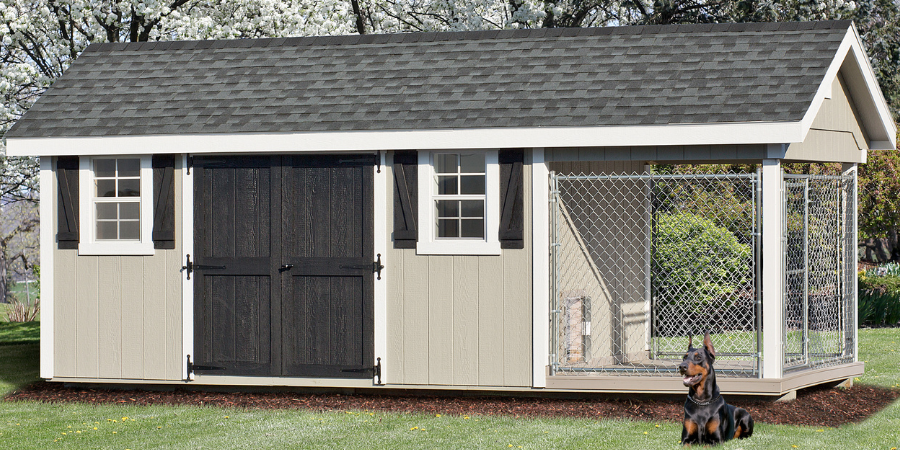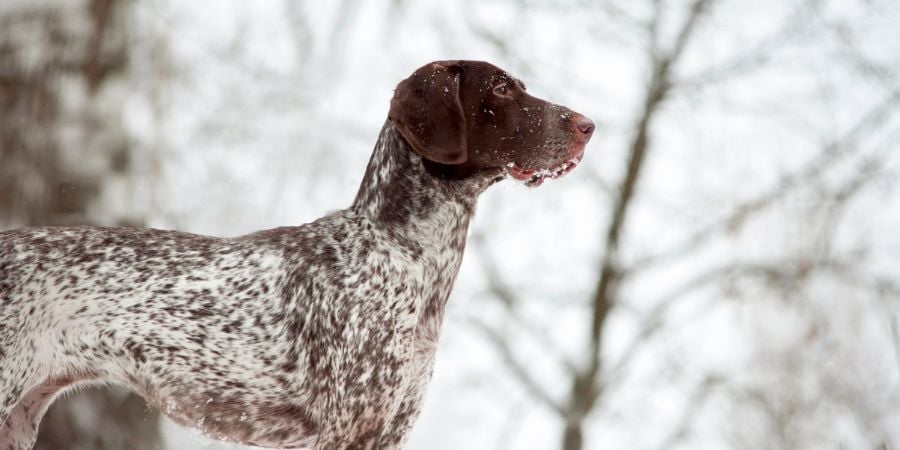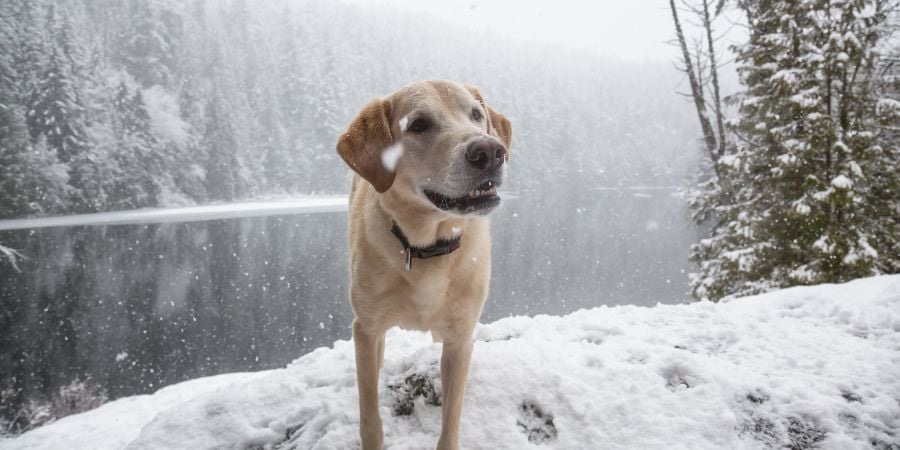Unlock the Potential: The Power and Purpose of Working Dogs
by Dakota Storage Buildings, on December 20, 2023

As winter begins, those of us with working and hunting dogs start to confront a slew of considerations that accompany the season. These dogs are more than pets; they are partners and protectors, playing integral roles in various tasks, whether on farms, in search and rescue, or in protective services. Despite their resilience, working dogs are not unaffected by the harsh elements of winter. This season, it is your responsibility to ensure they are protected from harsh conditions, enabling them to continue their roles effectively while maintaining their happiness. Dive into our blog on how to achieve this delicate balance and unlock the full potential of your working dogs, even in the most frigid season.
Bracing for Winter: Health and Comfort for Working Dogs
Winter for working dogs is anything but a tranquil break as their duties often intensify. From farmhands to guardians, these animals' roles are pivotal, and the season's harshness is an additional challenge they bravely face. Let’s delve into strategies to ensure your working dogs' health, enabling them to continue their invaluable service throughout the coldest months.
Understanding Their Environment: It is crucial to recognize that many working dogs, especially those on farms and ranches, are conditioned for an outdoor lifestyle. However, this natural hardiness does not negate the need for a comfortable, dry shelter. While they may patrol or work in the snow, providing a space that shields them from extreme temperatures and wet conditions is essential. This shelter is not only a haven but also a spot where they can recharge away from biting winds and relentless snowfall.
Optimal Bedding: The choice of bedding is pivotal in providing insulation and comfort. Materials like straw, hay, or wood shavings are preferable, given their low moisture content and insulating properties. These organic materials create a warm barrier between the dog and the ground, which is crucial when temperatures drop significantly. It is important to check the bedding regularly, ensuring it remains dry and free from mold, pests, or debris. The introduction of moisture can turn a warm bed into an uncomfortable, cold, dampness source, so prompt replacement of soiled bedding is key.
Water Supply Challenges: Dehydration is a risk in winter, as colder temperatures might prevent dogs from drinking, or water sources may freeze. Providing fresh, liquid water is non-negotiable. Heated water buckets or automatic waterers with built-in heaters prevent freezing. Insulated covers or boxes for water containers can also help, but they require regular checks to ensure the water has not iced over. Remember, adequate hydration aids in temperature regulation and overall bodily function, which is crucial for dogs actively working in colder settings.
Protective Measures for Paws: A working dog's paws are perhaps their most vital tool. During winter, these are vulnerable to various hazards, including ice accumulation between pads, exposure to toxic de-icing chemicals, and abrasions from frozen terrain. Regular inspections of their paws for cracks, cuts, or ice balls are fundamental in preventive care. Paw balms or waxes form a protective barrier on the pads, guarding against salt, chemicals, and extreme cold. They also help maintain paw pad flexibility, preventing painful cracks and dryness.

Keeping Your Working Dogs Engaged and Active Through Winter
During winter, it is easy to fall into the trap of redundancy and inactivity, particularly on those piercingly cold days when the comfort of indoors is more appealing than the responsibilities outside. This reality is not lost on our working dogs, who, despite their duties, also face the winter's brunt and the changes it imposes on their routines. The season, however, does not have to signify a lull in growth or bonding. Even as winter rages, the necessity for physical exercise and mental stimulation for working dogs does not diminish. These intelligent, high-energy animals thrive with purpose and can develop problematic behaviors if under-stimulated. Their work is often their driving force, providing satisfaction and a sense of accomplishment. You must find avenues for activity and engagement that challenge them mentally, physically, and emotionally, even when their standard duties may be lightened due to severe weather.
The decrease in outdoor activities does not mean physical exercise should be put on hold. Adaptation is key. Short, more frequent periods of intensive exercise can substitute for longer, more enduring tasks impossible due to harsh conditions. Creating an indoor agility course, for example, can provide both physical exertion and mental challenge, helping hone their coordination, concentration, and responsiveness. Physical exercise is just one aspect of your working dog's needs. Mental stimulation is equally critical. Puzzle toys that dispense treats demand problem-solving skills, occupying your dog's mind while offering a tasty incentive. Learning new commands or tricks further engages their cognitive faculties, reinforcing obedience, qualities that are invaluable in their professional roles.
Cold Weather Training Guide for Working Dogs
As winter's icy grip takes hold, the challenges it presents can seem like obstacles to the progress and routine you have established with your working dogs. However, it can offer a unique training landscape, encouraging adaptability and resilience. Here are some training approaches and modifications to navigate this period effectively, ensuring your working dogs continue to thrive even amidst the frost.
Practicing 'Stays' and Building on Distractions
One of winter's gifts is the natural environment it creates for practicing 'stays.' With distractions abounding, from falling snowflakes to gusty winds, your dog must learn to maintain focus, a skill invaluable in unpredictable working conditions. During training sessions, gradually increase the level of distractions, perhaps even incorporating unexpected sounds and sights using props or recordings. Over time, this method helps build a dog's impulse control, enhancing their reliability and discipline during work. Remember, training should be a positive, encouraging experience. Generously reward success with treats, praise, or playtime, ensuring your dog associates compliance and focus with positive outcomes. In the harsher conditions of winter, these positive associations are crucial for motivation.
Continued Training Throughout the Winter
Limited space during winter, especially indoors, can actually be an advantage for refining commands and positions. 'Control position' training is excellent in confined spaces, reinforcing your dog's understanding of expected behavior in various contexts. Take the opportunity to ingrain these positions as a source of comfort and safety for your dog. For instance, the 'sit' command at your left side should be an automatic response, offering your dog reassurance, particularly in uncertain or uncomfortable scenarios that winter may bring. Consistent practice, coupled with rewards, solidifies these behaviors, ensuring your dog reverts to them even in stressful situations.
Utilizing Indoor Spaces
While winter often limits outdoor activities, indoor environments provide controlled spaces for focused training. Here, you can work on precision, consistency, and even new skill acquisition without worrying about weather-related variables. If possible, enroll in a training class. These structured sessions offer routine and social stimulation, significantly benefiting both you and your dog. They also provide access to professional guidance, which can be particularly helpful for addressing any specific challenges you have encountered during winter.
Innovative Exercise Routines
Winter conditions might require a modified exercise regimen. Understand that physical activity is crucial not just for health but for effective learning and training. A dog with pent-up energy is less likely to focus and comply with commands. Incorporate activities like indoor fetch, tug-of-war, or agility exercises that challenge different muscle groups and require various levels of coordination and thinking. Not only does this help maintain physical fitness, but it also aids in burning off excess energy, leading to more productive training sessions.

Thrive Through Any Season With Your Working Dog
The key to a successful partnership with a working dog lies not only in regular training and physical well-being but also in ensuring their mental and emotional needs are met. These aspects become even more pronounced in the face of seasonal shifts, which bring new challenges and adjustments. Keeping your working dog happy and healthy throughout these transitions is critical, and it involves a holistic approach that considers the dog's overall experience throughout the year. It encompasses an understanding of their physical, mental, and emotional needs, adapting to the challenges each season brings. With your dedication to their well-being, your working dog will not only succeed in their roles but also lead a fulfilling, contented life. For more detailed guidance, download our free guide, “How to Ensure Your Working Dog is Happy and Healthy.” Your working dogs do not just need you for survival; they rely on you to lead a fulfilling, purposeful life, no matter the season.

























